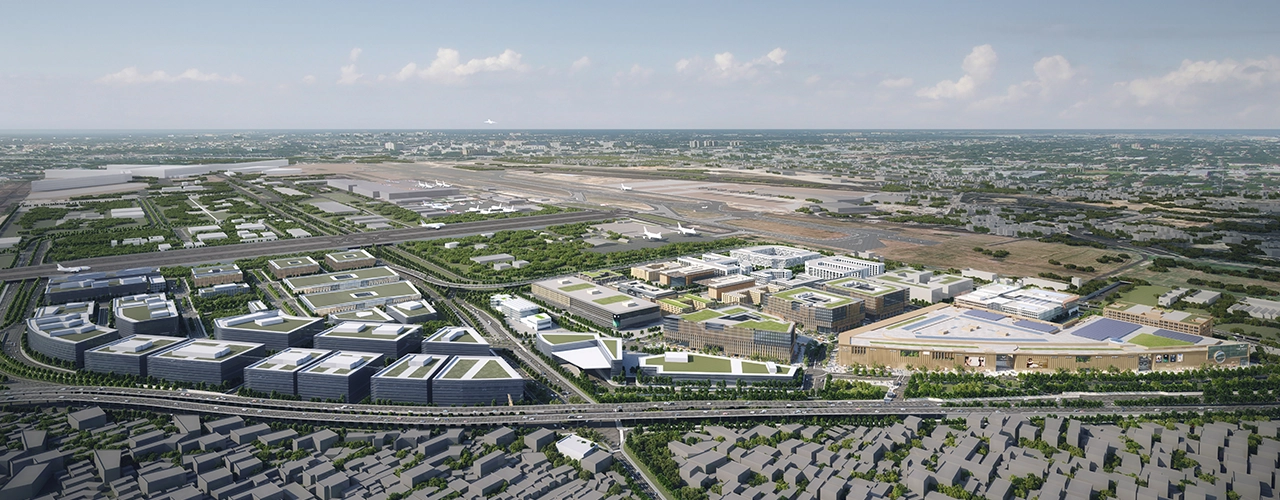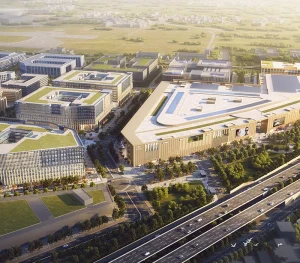GBD | July 30, 2025
What Are Global Business Districts?
Global Business District, or GBD for short, refers to an urban precinct that has been strategically planned to host commercial, residential, cultural, and infrastructural elements to facilitate the conduct of global business. Expanding on the meaning of a GBD as a globally integrated, smart, and mixed-use business district that allows contemporary enterprises to prosper in a digital and sustainable economy.
The concept has evolved from the Central Business District model. Where CBDs were built for commerce alone, GBDs respond to the needs of a globalised, digital, and experience-led economy.
According to EY’s 2020 Global Business District Attractiveness Report, a GBD’s value is measured across five key factors. Each factor directly impacts how companies, investors, and professionals evaluate the district’s long-term potential.
1. Ability to Attract and Retain Talent
Talent is the defining currency of the modern economy. A successful GBD is one that offers the infrastructure, amenities, and lifestyle needed to draw and retain skilled professionals.
EY ranks this as the most critical factor. Districts that blend workplace efficiency with housing, transit access, entertainment, and cultural options perform best. La Défense in Paris and Canary Wharf in London rank highly due to their ability to provide this environment at scale.
2. Proximity to Clients, Markets, and Business Ecosystems
Strategic location is a key driver of district performance. GBDs that are located near airports, ports, consulates, trade hubs, and metro networks improve operational efficiency and cut down decision-making time for global businesses.
The report shows that proximity improves collaboration, speeds up cross-border deals, and reduces logistical friction. Cities with high-connectivity districts are more likely to attract multinational headquarters and regional offices.
3. Quality of the Urban Environment
Physical design plays a direct role in business attractiveness. Open spaces, smart mobility, pedestrian access, public transport, cultural infrastructure, and environmental quality all contribute to a district’s usability and appeal.
The GBDs ranked highest in this category, such as Seoul’s Digital Media City, are those that invest in not just buildings but also liveability and public realm design.
4. Local and Global Influence
Beyond infrastructure, perception and influence matter. A high-performing GBD becomes a brand asset for its city. It hosts embassies, trade delegations, summits, and global organisations. It becomes a symbol of a city’s readiness to operate at a global level.
EY notes that this factor plays a growing role in decision-making. Companies increasingly view location as a reputational and relational investment.
5. Purpose-Built, Innovative Real Estate
Modern global businesses expect flexibility, sustainability, and tech-enabled design. GBDs are expected to deliver high-performance office spaces with digital infrastructure, energy-efficient systems, and adaptive layouts.
EY’s report shows that demand for this kind of real estate is increasing sharply. Districts like Hudson Yards in New York or Marunouchi in Tokyo offer buildings that support cloud computing, AI integration, and ESG compliance by design.
Why This Matters
Global Business Districts aren’t just physical developments. They are economic strategies. Cities that invest in them improve their standing in global business rankings, attract high-value industries, and create long-term resilience.
The most attractive GBDs score consistently across all five dimensions. They are not just better planned—they are more responsive to how the world of business is changing.




